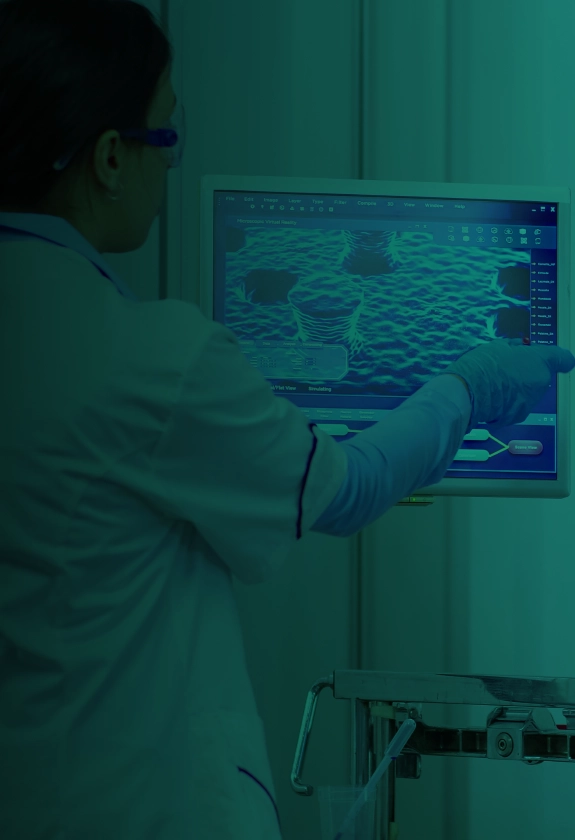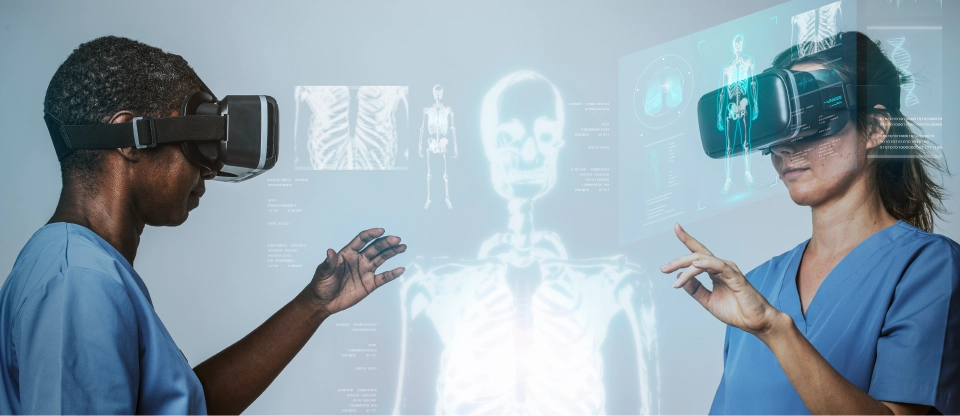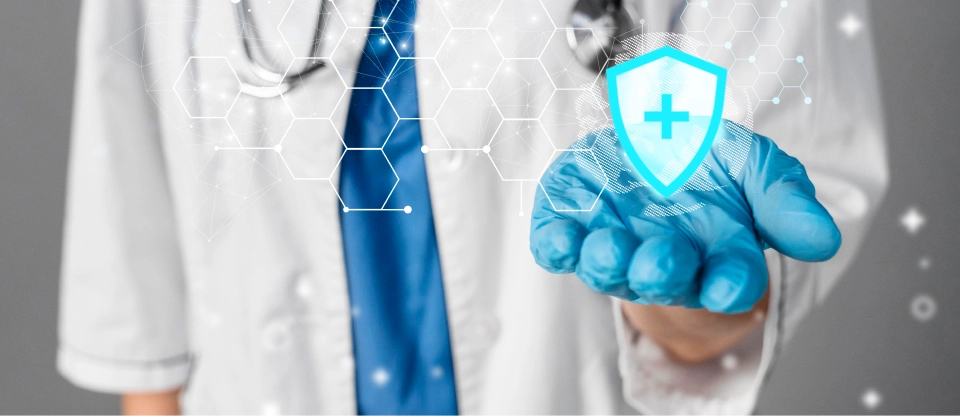INTRODUCTION
Medical imaging is evolving by making surgeries safer and diagnoses quicker
Medical imaging technologies have continually evolved, transforming the world of medicine with new levels of precision and clarity in diagnosing every condition imaginable. These advancements have always been at the forefront, from X-rays to MRI and CT scans, helping clinicians recognize illnesses earlier in life and plan treatments more efficiently. These technologies have also benefited from diagnostic advancements that allow clinicians to be more confident about caring for patients.
Enhanced diagnostics aided by state-of-the-art imaging devices are directly associated with improved patient care. If diseases are detected accurately, treatments can be given earlier, the likelihood of recovery is high, and less invasive surgeries are needed. Moreover, sophisticated imaging tools offer accurate data about the course of illnesses, which enable doctors to tailor treatment strategies to specific patients, resulting in improved, individualized care.
These technologies have improved patient care and healthcare systems. By imaging more quickly and accurately, clinicians can eliminate diagnostic errors, reduce overhead, and optimize spending. This enhances patient care, reduces the strain on medical institutions, and makes healthcare more affordable and effective in the long run.
IMPORTANCE
Breakthroughs in medical imaging are setting new standards for diagnostics
Medical imaging is the heartbeat of our contemporary health care as it offers a non-invasive, extremely detailed view of the human body to ensure correct diagnosis and treatment. X-rays, CT scans, MRIs, and ultrasounds are also used in diagnosing everything from fractures to rare illnesses such as cancer and heart disease. With these technologies enabling clinicians to see within the body, follow disease activity, and measure the success of treatments, medical imaging is the cornerstone of patient care across almost all medical specialties.
Current trends in medical imaging are changing the face of medicine with the use of artificial intelligence (AI), machine learning (ML), and cutting-edge digital imaging. AI and ML algorithms digitize image analysis, automatically identifying abnormalities, speeding up diagnostics, and eliminating human errors. Digital imaging, such as 3D and 4D imaging, gives richer, more fluid views of organs and tissues that help to explain more challenging medical issues. These are creating diagnostic accuracy, streamlining workflows, and making more individualized and data-driven healthcare possible.
Do you want to learn about the exciting advancements in medical imaging?
RECENT ADVANCEMENTS
Medical imaging is transforming diagnostics with AI-powered tools & 3D imaging
AI in medical imaging
AI is now a transformative medical imaging innovation, allowing you to process images more accurately and efficiently. AI algorithms are fast and can read vast amounts of data to see trends and anomalies humans miss. For instance, AI systems are now used to detect the possibility of cancerous lesions in mammograms or early neurological signs in brain scans. By automated first-pass image analysis, AI speeds up diagnosis, ensures more consistent results, and frees up radiologists for more challenging cases. That causes faster, more precise diagnoses and better patient engagement outcomes.
Along with diagnostic accuracy, AI improves the workflow in medical imaging departments. AI systems can alert doctors to urgent scans, bypassing the slog of imaging review and freeing up resources in busy medical settings. As machine learning models get smarter and wiser at learning from new data, AI-powered imaging systems will become more sophisticated, giving radiologists more powerful decision-support systems. This AI integration of imaging improves clinical efficiency while reducing the chance of human error, making diagnosis more accurate.
3D and 4D imaging
3D and 4D imaging technologies have changed how clinicians look at the human body, revealing more about anatomy and disease. 3D imaging can also generate fine-grained multi-dimensional models of organs, tissues, and bones for improved surgical planning, diagnosis, and monitoring. Doctors can now consult these 3D models to visualize complicated procedures more precisely, minimizing complications and improving the quality of surgeries. 3D imaging helps in orthopedics, cardiology, and oncology because it gives you a greater overall perspective of anatomy and allows you to plan treatments better.
4D imaging goes even further, combining it with the concept of time, producing dynamic images that record the movement of organs and tissues (like a beating heart or fetal growth). This increased graphical representation can be instrumental in cardiology, where a better visualization of heart movement can provide better diagnoses for problems such as valve problems or arrhythmias. 4D ultrasounds in the obstetrics department reveal a better picture of the development of the fetus and detect abnormalities in the earliest stage. The new 3D/4D imaging technologies allow clinicians to diagnose and treat patients more accurately and effectively.
Molecular imaging
Molecular imaging is a technology that enables doctors to peer outside the body and visualize cell and molecular dynamics. By photographing the molecular action of living processes, the technology helps us detect and diagnose cancer, heart disease, and neurological conditions earlier and more precisely. Imaging methods such as positron emission tomography (PET) and single-photon emission computed tomography (SPECT) are both molecular imaging techniques that can monitor metabolic changes within tissues. It helps us detect diseases before structural change occurs, intervene earlier, and have a better chance of survival.
One of the most significant advantages of molecular imaging is that it can deliver personalized information about disease progression and treatment response. In oncology, for instance, molecular imaging can show a tumor’s toxicity with chemotherapy, allowing clinicians to change their course of treatment based on near-real-time data. Such a shift to molecularly targeted diagnosis and treatment plans would be a major step in precision medicine, allowing clinicians to provide targeted therapies with a greater probability of success.
Cloud-based imaging software
Cloud-based imaging applications are changing how medical images are stored, shared, and processed across healthcare systems. The cloud enables you to centralize massive amounts of imaging data so that clinicians can share diagnostic images anywhere with access to the internet. This is useful in remote consultations, second opinions, and multi-disciplinary group discussions, in which experts in other offices can see and review the same images in real-time. Cloud-based solutions also prevent expensive on-premises storage systems, reducing hospital costs and giving them a place where images can be readily retrieved in case they need them.
In addition, HIPAA-compliant cloud-based imaging services have greater scalability and security so that healthcare providers can store terabytes of data without fear of space limitations or patient privacy. They are often pre-installed with encryption to comply with data security regulations like HIPAA. Cloud also integrates with AI tools and machine learning algorithms, which are used to perform high-end analytics for precise diagnosis. Effortlessly storing, sharing, and processing medical images, cloud-based software leads to faster, more effective delivery of healthcare, both for patients and the system.
CUSTOM SOFTWARE'S ROLE
Custom software is behind every breakthrough in medical imaging
Custom healthcare software development plays an essential role in supporting medical imaging technologies because it allows the incorporation of these advanced technologies into healthcare environments. As imaging technology develops, you require more sophisticated software for complex image processing, data storage, and analysis. Individualized software packages cater to specific needs for the imaging technology used, such as MRI, CT scan, and ultrasound, and optimize the workflow of image acquisition, storage, and processing. These solutions also include AI and machine learning algorithms, making image interpretation more accurate and fast, thus leading to more precise diagnoses and patient outcomes.
Controlling the massive volumes of imaging data produced by today’s medical equipment calls for powerful and effective software. Individual software is customized to store, retrieve, and structure high-resolution imaging files to be accessed as needed. The solutions also come with robust security features to ensure patient data safety, including meeting healthcare regulations such as HIPAA. In addition, custom software often integrates cloud storage to enable medical personnel to access images remotely, collaborate with other specialists, and make decisions faster to ensure better patient care and greater efficiencies.
The other significant advantage of custom software for medical imaging is its integration with EHR and workflow automation. Implementing healthcare solutions helps insert imaging photos into the patient records automatically, eliminating data entry errors and increasing productivity. This integration gives physicians access to patient histories, images, and reports from a single location for better clinical decisions. In addition, custom software can simplify the imaging process by automating scheduling, reports, and billing – making radiology departments more efficient and alleviating the administrative burden for physicians.
Do you want to discover the trends set to transform healthcare diagnostics?
BENEFITS
Medical imaging is improving diagnostic accuracy and patient outcomes
Advances in medical imaging have vastly improved diagnostics’ accuracy, rapidity, and accessibility. These advances allow clinicians to identify illnesses earlier, make better diagnoses, and reduce the use of invasive treatment. Patients experience more tailored treatment plans and better health, and healthcare organizations experience improved efficiency in providing care.
Faster diagnosis
New technologies in medical imaging have considerably shortened the time it takes to make a diagnosis. New, AI-powered, and machine-learning-based imaging systems can be used to quickly process images and identify abnormalities in a way that’s much faster than before. This speed is critical in situations of a life-threatening emergency when instant judgments could save your life – if you’re diagnosing a stroke or traumatic injury. More rapid diagnosis saves patients time and helps treat illnesses faster.
More accurate disease detection
The new clarity and accuracy of 3D, 4D, and molecular imaging have made disease detection even more accurate. These technologies give clinicians a more complete look at the body and highlight subtle, invisible anomalies in traditional 2D scanning. In oncology, for instance, previously missed early-stage tumors can now be detected even when small. Improved detection reduces the possibility of misdiagnosis and allows patients to get the correct care at the right time.
Reduced need for invasive procedures
Due to the intricacy of information provided by modern imaging tools, invasive tests such as biopsies or exploratory surgeries are avoided. The imaging offered by noninvasive scans—for example, MRI or PET scans—can reveal deep details about internal structures and mechanisms without the risks of complications, infection, or prolonged recovery. This makes diagnosis more patient-safe, cost-effective, and shorter time to diagnosis and treatment.
Improved patient outcomes
Better medical imaging results in healthier patients through faster, more precise diagnosis and more tailored treatment. More accurate images and data enable physicians to target treatments according to a patient’s disease, making it more likely that the therapy will be successful. Early-onset diseases such as cancer or heart disease can be treated earlier and with less harmful intervention. In addition, by decreasing invasive interventions and enabling faster, more precise diagnoses, patients heal quicker and receive better care.
CHALLENGES
Implementing advanced medical imaging technology is challenging
Implementing medical imaging technologies isn’t always easy for hospitals. Whether it’s the upfront expense of acquiring and supporting the latest technology or how new systems can be integrated into existing healthcare systems, all of these barriers hamper adoption. Then, there are also data security and patient privacy issues if large quantities of highly sensitive imaging data are being processed. These problems must be addressed to reap the maximum value from these transformative technologies.
Integration with existing healthcare systems
The main obstacle for new medical imaging technologies is seamless integration with current healthcare platforms like electronic health records (EHR) and hospital information management systems. Most healthcare organizations also work with older software that cannot easily be leveraged on newer imaging platforms, making data-sharing and cross-platform communications challenging. Integrating advanced imaging technologies requires fully-featured software solutions to fill these holes so clinicians can access images and diagnostic data. Integration can be complex, lengthy, and expensive to implement, which limits the use of these advanced technologies.
Cost of implementing advanced technologies
The cost of deploying advanced medical imaging is challenging for most healthcare organizations, minimal practices, or small hospitals. There is a significant upfront investment in new imaging equipment, be it 3D/4D scanners or AI diagnostic tools, including purchasing the machines, establishing infrastructure, and training people to use these systems. Maintenance, software updates, and other regular maintenance add to the price. In the case of some hospitals, there is no simple cost-benefit equation that can help you understand the expenditures, even when they pay off in the long run.
Data security and patient privacy concerns
As medical imaging technologies improve, security and privacy concerns become more pressing. New imaging systems produce terabytes of private information that needs to be safely stored, transferred, and retrieved. Cloud services and AI platforms combine new risks to healthcare systems, making healthcare institutions more vulnerable to cyberattacks, breaches, and patient data theft. Compliance with laws such as HIPAA requires high-quality encryption, encrypted data storage, and regular security audits. Handling these data privacy issues when integrating new imaging technology is a crucial issue that healthcare providers must address to safeguard patient data and ensure trust.
FUTURE TRENDS
The cutting-edge trends in medical imaging will redefine diagnosis and treatment
The future of medical imaging technology is poised to bring even more groundbreaking innovations, reshaping how diagnostics are performed. Emerging trends such as AI-driven predictive analytics, real-time imaging with augmented reality (AR), and virtual reality (VR) for training and surgical planning are set to enhance the precision and efficiency of healthcare. These advancements will continue to push the boundaries of what’s possible, offering more personalized care and revolutionizing the diagnostic landscape.
Integration of AI-powered predictive analytics in imaging
In the future, AI-based predictive analytics will be a more prominent component in medical imaging. AI systems will read vast amounts of imaging data to see what’s wrong and forecast disease progression, outcome, and risk before the disease becomes clinical. It will also help clinicians take preventive action earlier, tailor care, and optimize the long-term patient experience. For example, AI could use micro-events in imaging to forecast tumor progression or heart attacks so that it can be taken more actively and specifically. The more advanced the AI algorithms become, the more predictive analytics can be combined to transform diagnostic accuracy and health care.
Real-time imaging analysis through augmented reality (AR)
AR could be the next big change in medical imaging by providing instantaneous image analysis and visualization during surgery. The surgeon can project live imaging data onto a patient’s body, showing them better, more precise internal anatomy during surgery. This real-time analysis will improve accuracy, minimize complications, and make advanced surgeries safer. For example, in a minimally invasive surgery, AR could aid the surgeon by indicating fundamental anatomy and risk areas. As AR technology becomes more sophisticated, the application of it to medical imaging will enable faster, safer procedures and better patient outcomes.
Use of virtual reality (VR) for training and surgical planning
Medical imaging is expected to be increasingly used for training and surgical preparation in virtual reality (VR). Healthcare experts could practice surgeries on exact, 3D models of patients’ bodies in VR to prepare for advanced surgery and devise treatment plans. This hands-on approach will support training for medical students and senior surgeons and make learning advanced skills safe. VR might also be applied in pre-surgical planning, where surgeons can see alternative options for surgery while manipulating virtual representations of the patient's internal organs. When VR is ready to be implemented, it will be a necessary component of education and clinical training.
CONCLUSION
Medical imaging technology is drastically improving patient care
Improvements in medical imaging have streamlined diagnosis to make it faster, more precise, and less invasive. From AI-driven image analysis to 3D and molecular imaging, they’ve all made spotting disease earlier and more precisely possible. As healthcare continues to adopt these technologies, patients get faster diagnoses, better-personalized care, and fewer unnecessary interventions. This evolution not only improves the care for patients but also improves the efficiency of healthcare systems, enabling physicians to provide higher-quality care with fewer resources.
In the future, AI, AR, and VR in medical imaging have great promise for further reshaping diagnosis. They will remain the new engines of the field, providing real-time data, predictive modeling, and more training for clinicians. As such instruments become more common and available, the future of medical imaging will lead to even more accurate, individualized, and efficient patient care, ultimately revolutionizing healthcare delivery.
People Also Ask (PAA) questions
- What are the recent advancements in medical imaging?
Newer trends in medical imaging include AI-based diagnosis, 3D and 4D imaging for more visualization, molecular imaging for cellular interpretation, and cloud-based applications for sharing and storing images. These improvements increase diagnostic accuracy, speed, and reach.
- How is AI used in medical imaging?
Medical imaging uses AI to process a massive amount of image data with high speed and precision. It helps to see patterns, detect changes, and help radiologists diagnose disorders earlier.
- What role does software play in improving diagnostic imaging?
Custom software can handle large amounts of imaging records, integrate with electronic health records (EHR), and optimize workflow. They offer safe storage, remote access, and easy sharing of medical images to help doctors make faster and better decisions.
- How does 3D imaging enhance medical diagnostics?
3D scans offer multidimensional views of internal structures easier to visualize than 2D scans. They allow clinicians to quantify complex anatomy, identify diseases more early, and schedule surgeries more precisely, yielding better diagnostics and treatment.
- What are the challenges of implementing advanced imaging technology?
The biggest challenges include the expense of purchasing and maintaining advanced imaging technology, integrating new technology into current medical infrastructure, and ensuring data security and privacy.
- What are the benefits of medical imaging technology in healthcare?
Medical imaging speeds and precise diagnosis avoid invasive procedures and can identify diseases earlier. It optimizes care because it reveals more about the disease, leading to better diagnosis and treatments.
- How does medical imaging impact patient outcomes?
Medical imaging helps providers design effective treatment plans by enabling earlier, more accurate diagnoses, leading to better patient outcomes. It reduces unnecessary procedures and promotes personalized care, improving recovery rates and overall patient satisfaction.






